Abstract
Paraldehyde and methylpentynol blocked transmission of nerve impulses through the superior cervical ganglion of the cat when the drugs were administered intra-arterially to the ganglion or intravenously using the nictitating membrane as an indicator. Electrical studies showed that concentrations of methylpentynol and paraldehyde which blocked transmission in the isolated rat superior cervical ganglion were without action on the preganglionic nerve fibre. In amounts which blocked transmission in the isolated rat ganglion, paraldehyde had no depolarizing activity directly on the ganglion cells and did not interfere with the depolarizing activity of added acetylcholine. The results suggest that the block in transmission of the impulse could be accounted for by a decrease in the release of acetylcholine from the preganglionic nerve terminals. In both species the block was reversible.
Full text
PDF
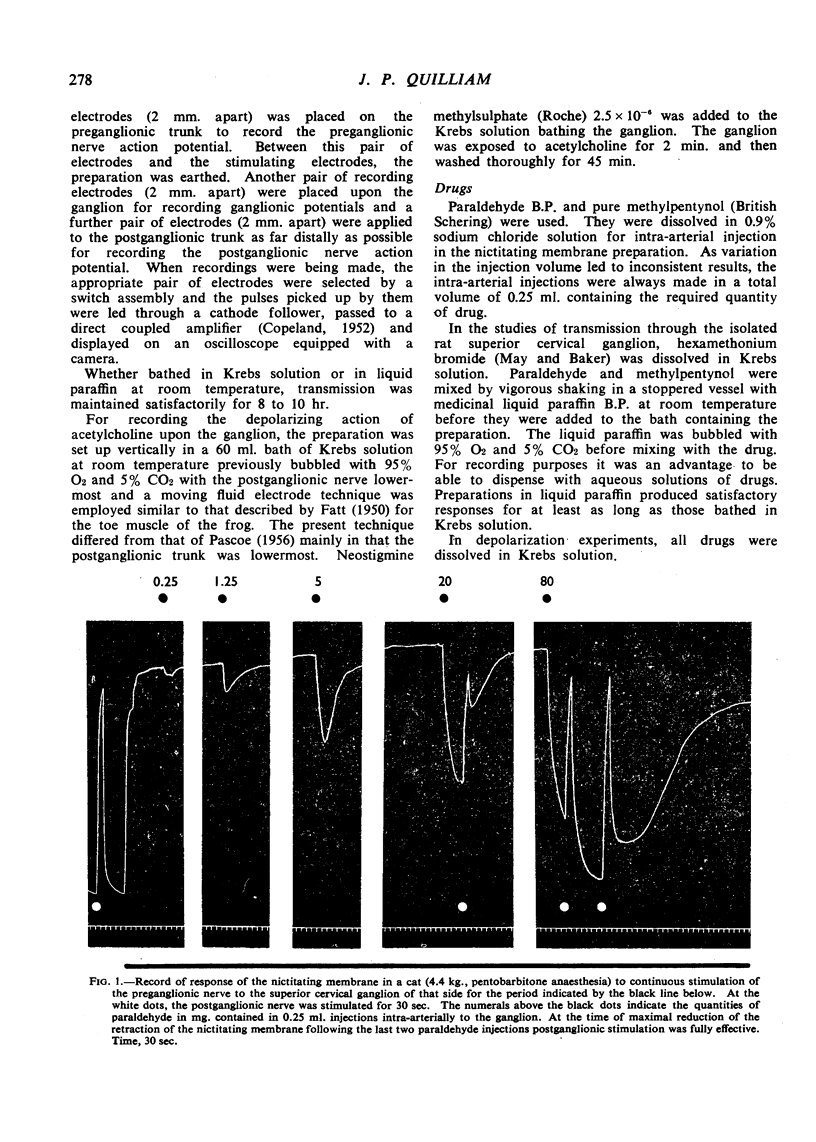

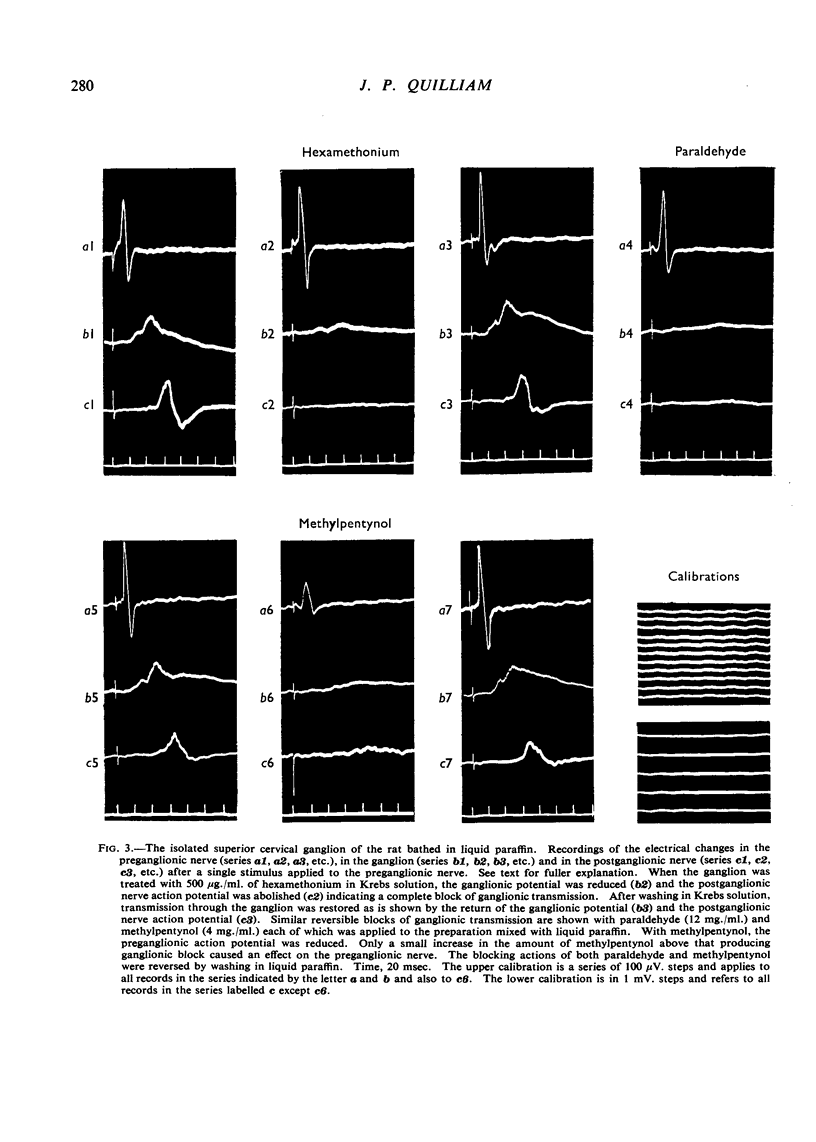
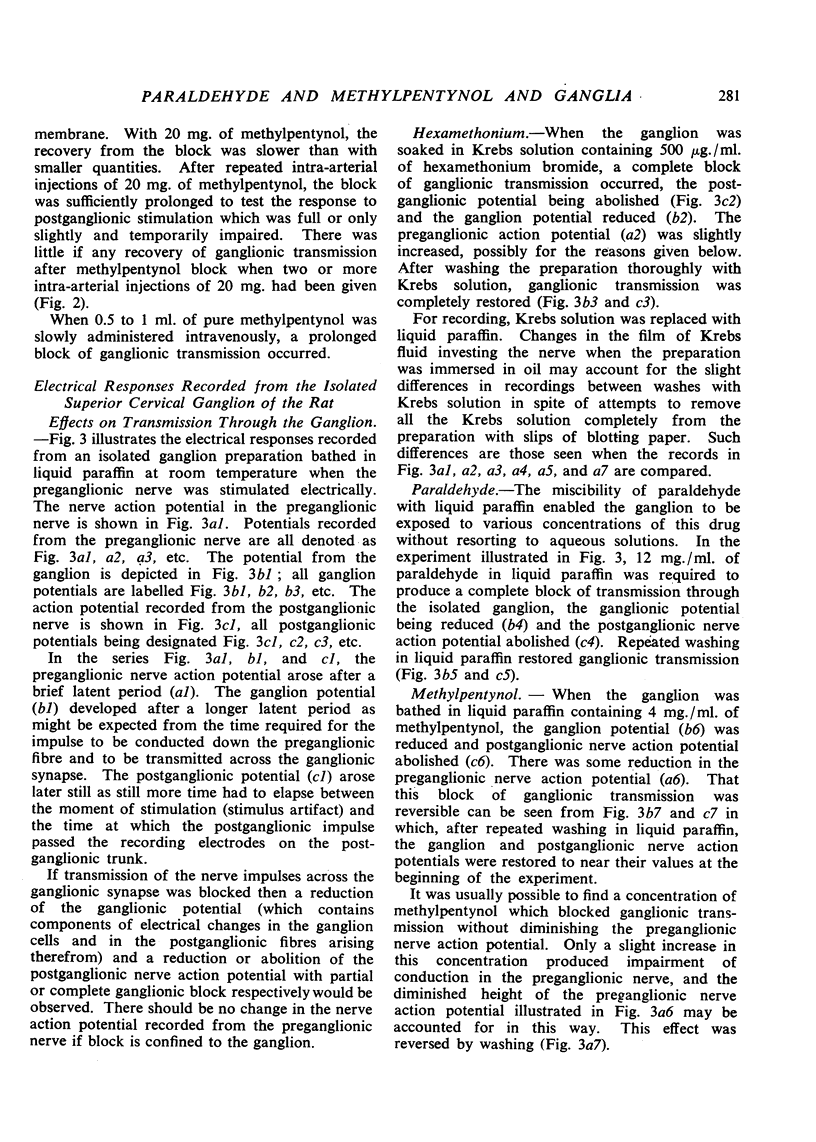
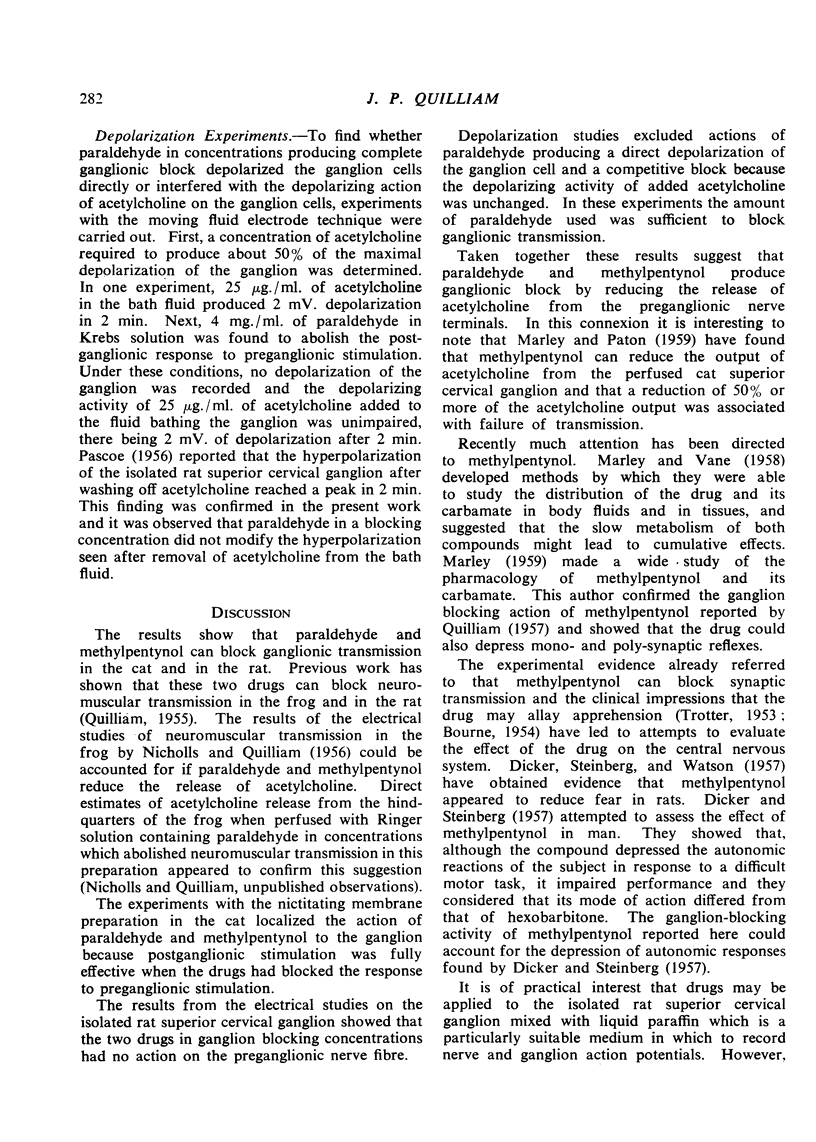
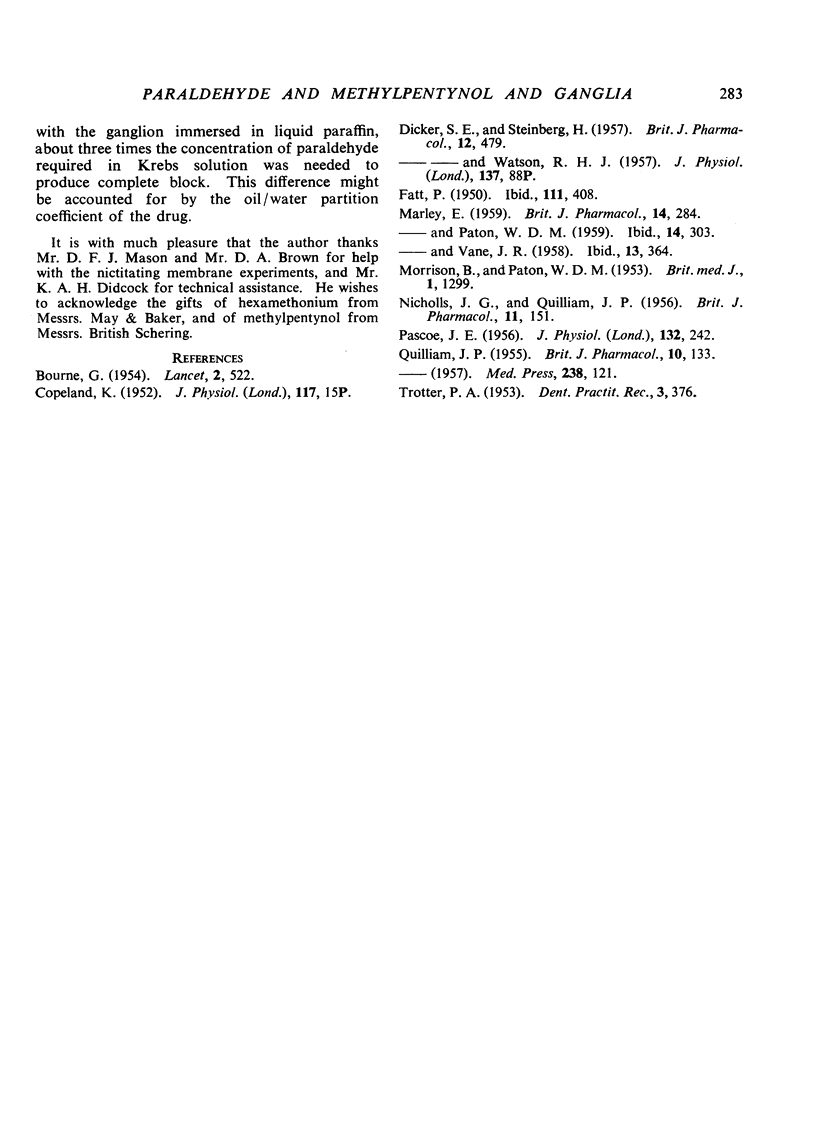
Selected References
These references are in PubMed. This may not be the complete list of references from this article.
- BOURNE G. Methylpentynol in labour. Lancet. 1954 Sep 11;267(6837):522–525. doi: 10.1016/s0140-6736(54)90312-8. [DOI] [PubMed] [Google Scholar]
- DICKER S. E., STEINBERG H. The effect of methylpentynol in man. Br J Pharmacol Chemother. 1957 Dec;12(4):479–483. doi: 10.1111/j.1476-5381.1957.tb00169.x. [DOI] [PMC free article] [PubMed] [Google Scholar]
- FATT P. The electromotive action of acetylcholine at the motor end-plate. J Physiol. 1950 Oct 16;111(3-4):408–422. doi: 10.1113/jphysiol.1950.sp004492. [DOI] [PMC free article] [PubMed] [Google Scholar]
- MORRISON B., PATON W. D. M. Effects of hexamethonium on normal individuals in relation to its concentration in the plasma. Br Med J. 1953 Jun 13;1(4823):1299–1305. doi: 10.1136/bmj.1.4823.1299. [DOI] [PMC free article] [PubMed] [Google Scholar]
- NICHOLLS J. G., QUILLIAM J. P. The mechanism of action of paraldehyde and methylpentynol on neuromuscular transmission in the frog. Br J Pharmacol Chemother. 1956 Jun;11(2):151–155. doi: 10.1111/j.1476-5381.1956.tb01045.x. [DOI] [PMC free article] [PubMed] [Google Scholar]
- PASCOE J. E. The effects of acetylcholine and other drugs on the isolated superior cervical ganglion. J Physiol. 1956 Apr 27;132(1):242–255. doi: 10.1113/jphysiol.1956.sp005519. [DOI] [PMC free article] [PubMed] [Google Scholar]
- PROCEEDINGS of the Physiological Society. J Physiol. 1952 Jul;117(3):15–P. doi: 10.1113/jphysiol.1952.sp004766. [DOI] [PMC free article] [PubMed] [Google Scholar]
- QUILLIAM J. P. The action of hypnotic drugs on frog skeletal muscle. Br J Pharmacol Chemother. 1955 Jun;10(2):133–140. doi: 10.1111/j.1476-5381.1955.tb00071.x. [DOI] [PMC free article] [PubMed] [Google Scholar]


